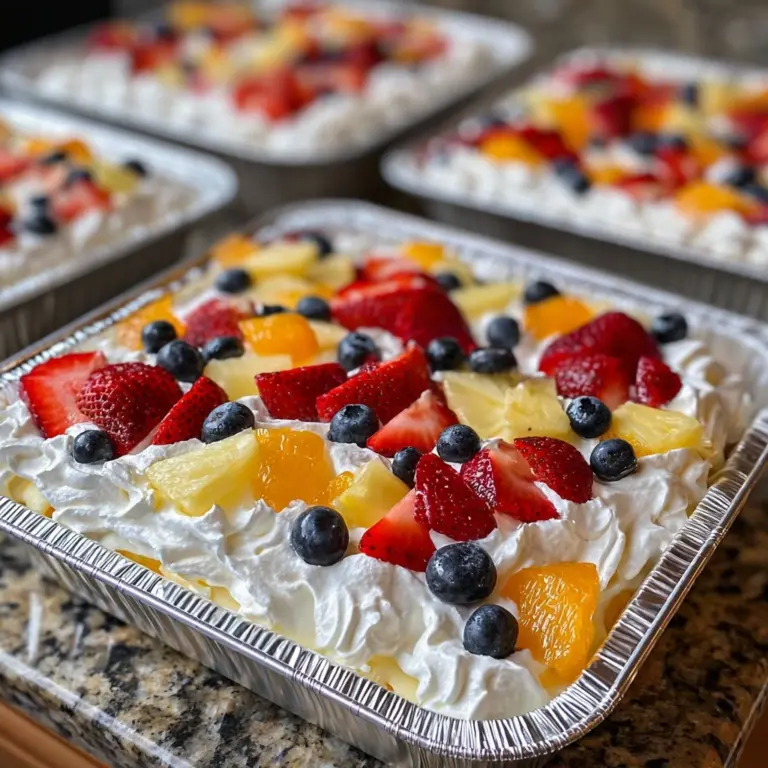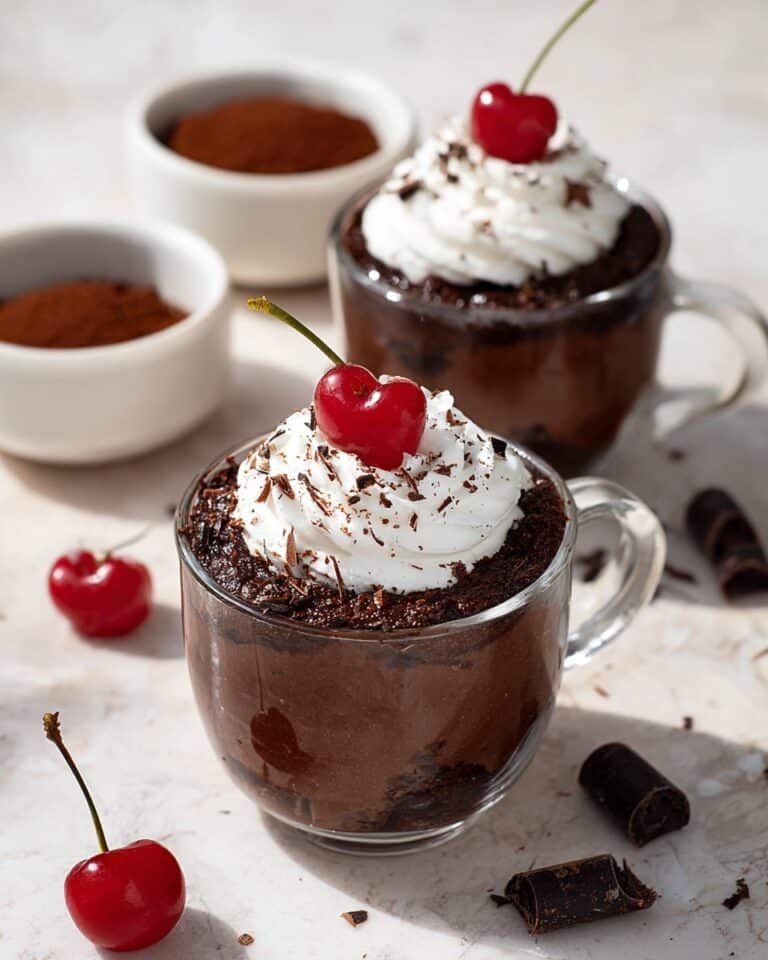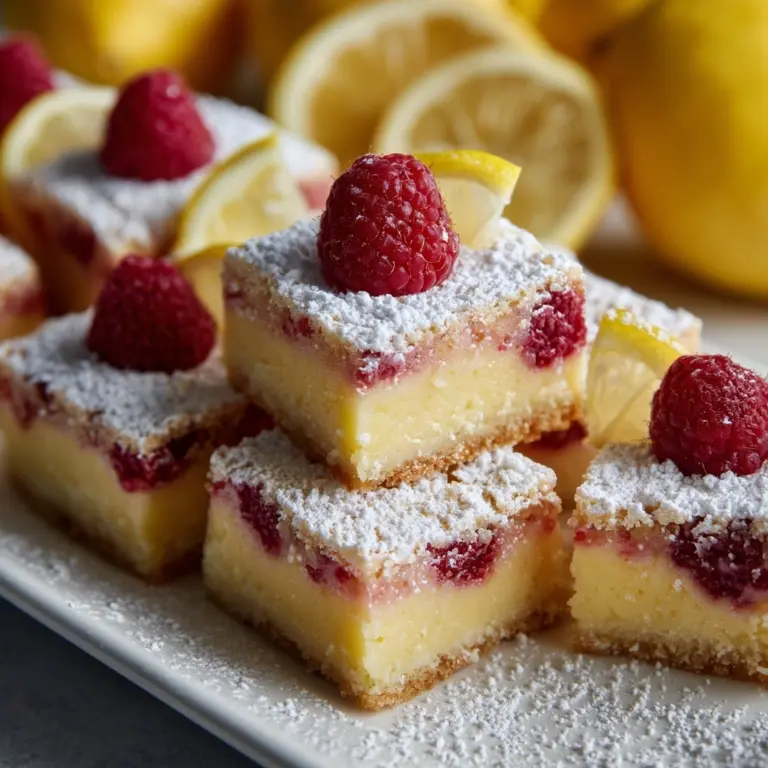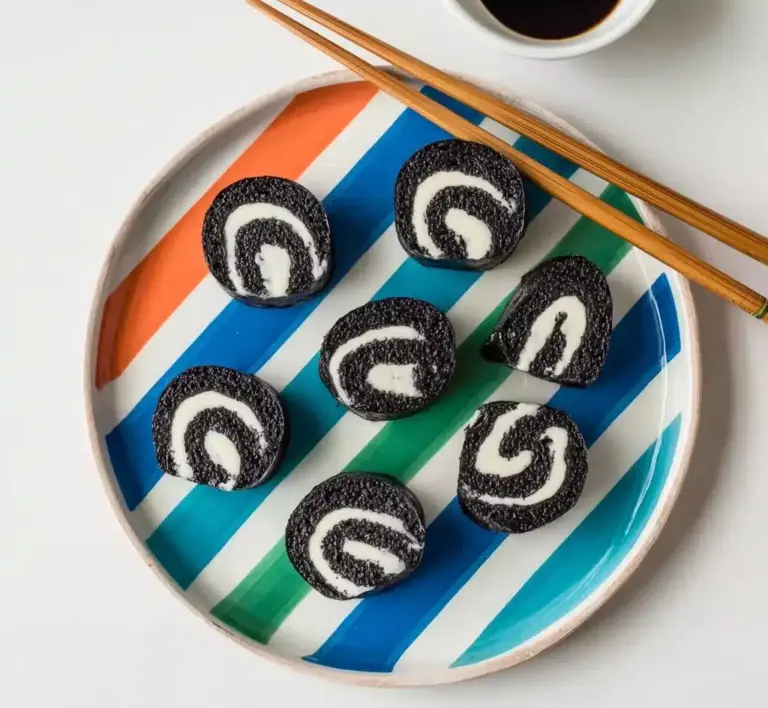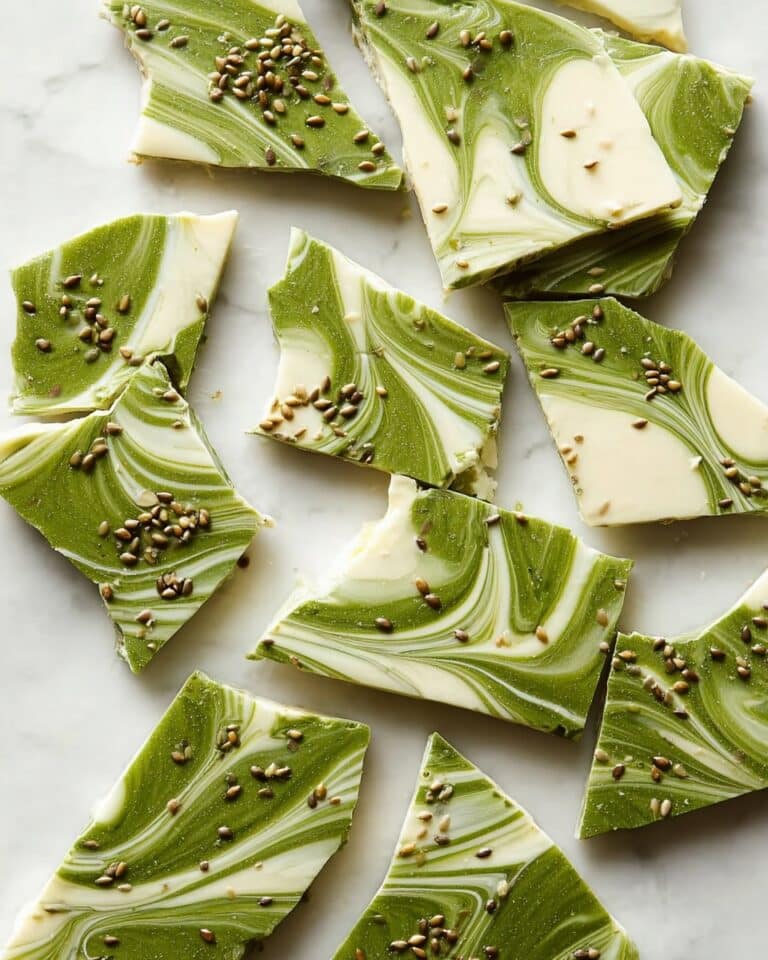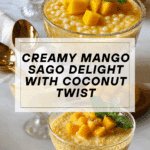Mango Sago Recipe
Mango Sago is a sunny, spoonable dessert hailing from Southeast Asia that perfectly embodies the magic of fresh mangoes paired with creamy coconut and chewy sago pearls. Each bite is lush and velvety, with bursts of ripe fruit and the playful texture of tiny tapioca spheres. If you love refreshing, tropical sweets that are somehow both light and indulgent, this is the treat you simply can’t miss—especially at the peak of mango season!
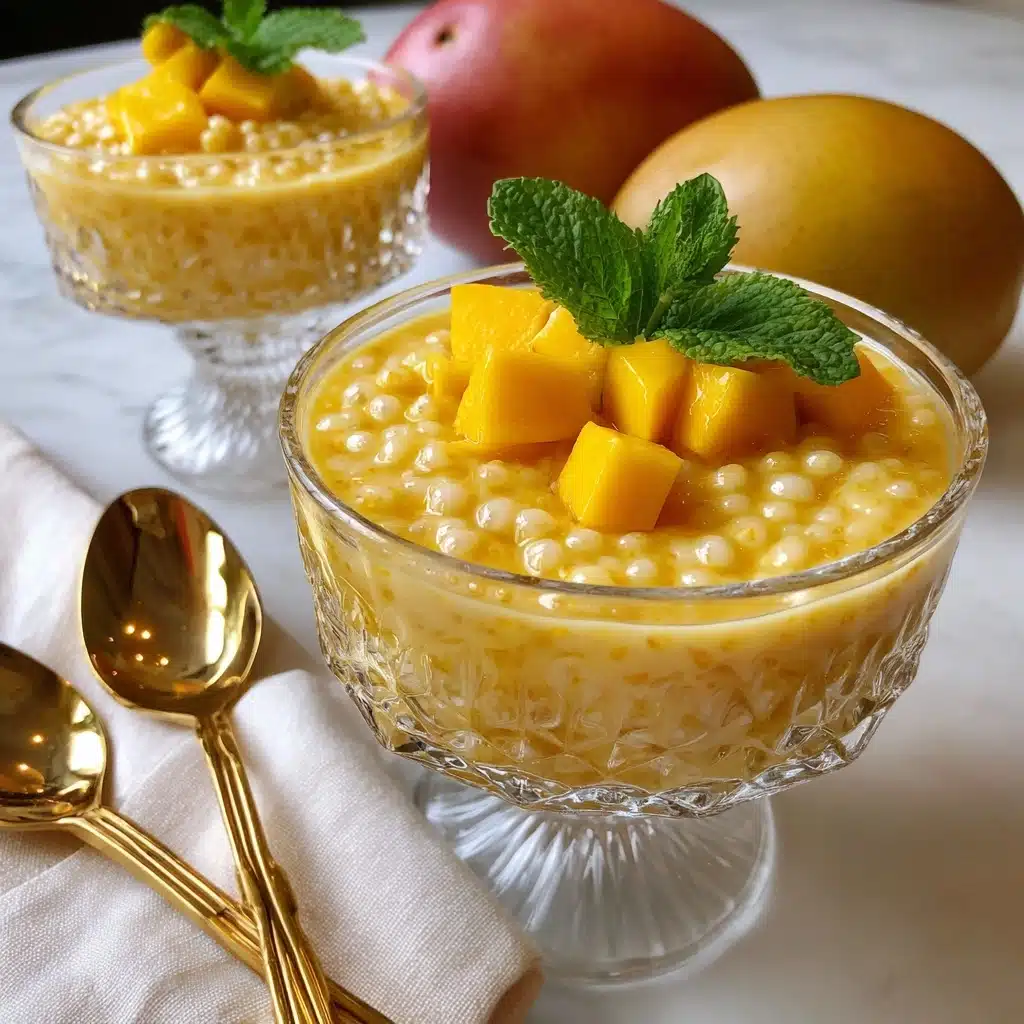
Ingredients You’ll Need
The magic of Mango Sago lies in its simplicity: just a handful of ingredients, each carefully chosen to deliver maximum flavor, irresistible color, and a silky, multi-textured experience. Here’s what you’ll need for your new favorite dessert, plus a few tips for making each one shine!
- Sago pearls: These tiny tapioca balls become perfectly chewy when cooked, giving Mango Sago its signature texture.
- Fresh mango: Use the ripest, juiciest mango you can find for stunning natural sweetness and vibrant color.
- Coconut jelly (optional): Soft, bouncy, and lightly sweet, it adds an extra layer of fun with every scoop.
- Mango jelly (optional): If you love all things mango, this bursts with juicy flavor and beautiful yellow color.
- Diced mango: More mango? Yes please! Adding cubes of fresh fruit gives the dessert texture and brightness.
- Evaporated milk: Makes the dessert lush and creamy while balancing fruitiness with a gentle richness.
- Condensed milk: This is the main sweetener—adjust to your taste, but don’t skip its silken smoothness.
- Full-fat coconut milk: Essential for a creamy coconut base, which pairs dreamily with mango’s tang.
How to Make Mango Sago
Step 1: Cook the Sago Pearls
Start by bringing a generous pot of water to a boil. Once bubbling, sprinkle in the sago pearls, giving them a stir now and then to keep them from sticking. Cook for about 15 minutes, watching as the pearls become mostly transparent—don’t worry if a tiny white dot lingers at each center. Turn off the heat, cover the pot, and let the pearls rest for about 15 more minutes until fully translucent and delightfully chewy.
Step 2: Cool the Sago
Once the pearls are just right, pour them into a fine mesh strainer and rinse thoroughly with cold water. This step makes them bouncy rather than sticky. Transfer the sago to a bowl of cold water to keep the pearls from clumping together while you prep everything else.
Step 3: Blend the Mangos
Peel and chop your mango, then toss it into a blender with chilled evaporated milk. Blend on high until you have an ultra-smooth, creamy mango purée. This vibrant golden nectar will be the flavor backbone of your Mango Sago, so let those mangos shine!
Step 4: Mix Everything Together
Drain the now-cool sago pearls thoroughly, then add them to a large mixing bowl. Scoop in your diced mango, coconut jelly, and mango jelly if you’re using them. Pour in the sweetened condensed milk and coconut milk, followed by the silky mango mixture. Give it all a gentle stir—once combined, taste and add more condensed milk if you prefer things sweeter. Pop the bowl in the fridge to chill for at least an hour, or quick-chill with a handful of ice cubes for instant gratification.
Step 5: Serve and Enjoy
Ladle your Mango Sago into individual cups or dessert bowls. Each serving looks as irresistible as it tastes—ready to become an instant summer classic at your table!
How to Serve Mango Sago
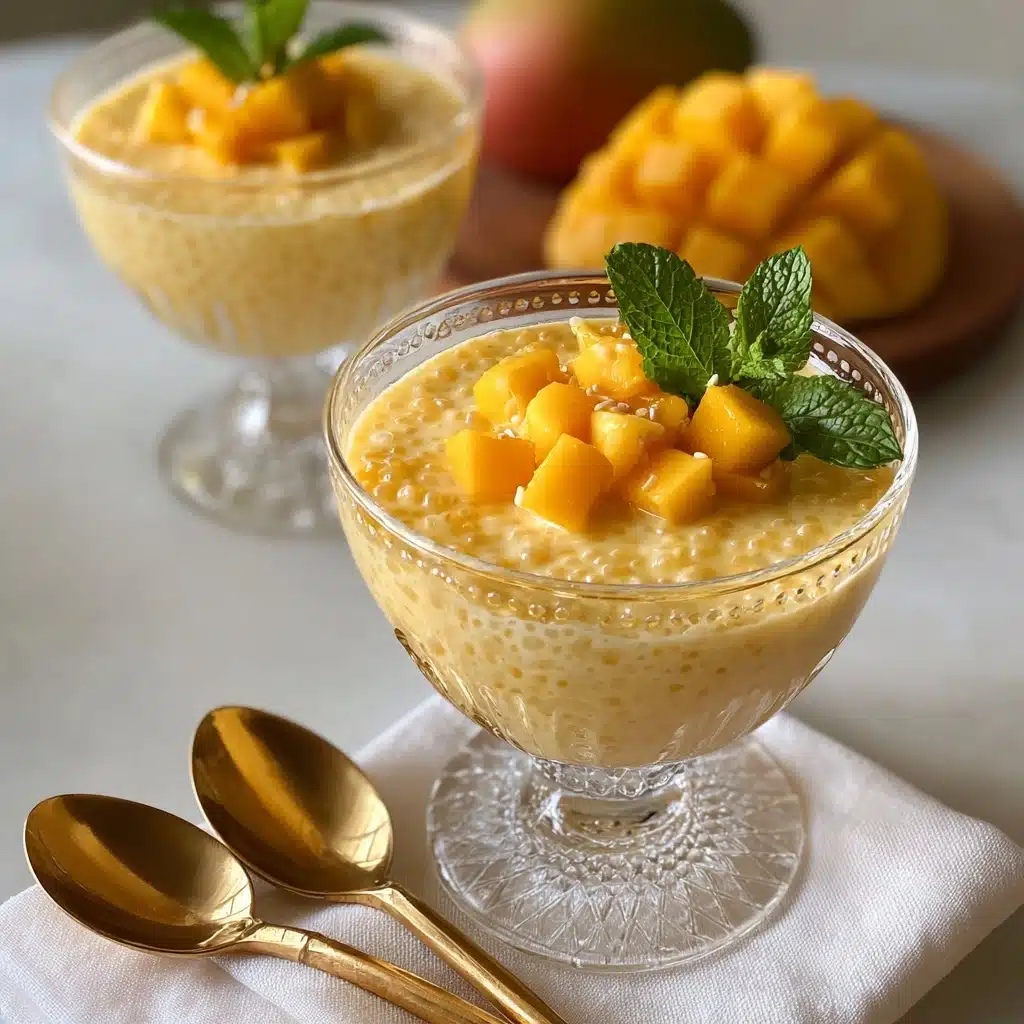
Garnishes
The right garnish transforms Mango Sago from lovely to dazzling. Fresh mint leaves, a few extra mango cubes, or a sprinkle of toasted coconut are my favorites for that extra pop of color and flavor. If you like a little crunch, a few crushed pistachios or slivered almonds can send it right over the top.
Side Dishes
For a light, breezy dessert course, pair Mango Sago with crisp coconut cookies or delicate almond tuiles. If you’re serving an Asian-inspired meal, it’s the perfect follow-up to something spicy or tangy—think Thai chicken, spring rolls, or a vibrant salad. Its refreshing sweetness brings balance to almost any savory spread.
Creative Ways to Present
Mango Sago looks extra inviting in clear glasses to showcase its beautiful layers—try stemmed goblets for a touch of elegance, or small mason jars for outdoor fun. You can even pour it into hollowed-out mango halves or coconut shells for a tropical wow factor. If you’re feeling playful, add bubbly seltzer on top just before serving for a sago-inspired float.
Make Ahead and Storage
Storing Leftovers
If you have extra Mango Sago, transfer it into a tightly sealed container and refrigerate promptly. It’s best enjoyed within 1-2 days while the fruit remains fresh and the sago stays plump. Occasionally, the mixture will thicken as it chills, so give it a stir and, if needed, add a splash more coconut milk to loosen it up before serving again.
Freezing
Freezing Mango Sago isn’t recommended, as the delicate texture of the tapioca and fresh mango can suffer in the deep chill. The coconut milk may also separate upon thawing. For best flavor and texture, enjoy your creation within a couple of days of preparing it—trust me, it rarely makes it to the freezer anyway!
Reheating
No reheating required for Mango Sago—in fact, it’s all about those deliciously cool, creamy vibes. If you’ve prepped it in advance but want to serve super-chilled, just pop it in the fridge half an hour before your meal, or stir in a bit of ice to bring down the temperature instantly.
FAQs
Can I make Mango Sago in advance?
Absolutely! Mango Sago keeps beautifully in the fridge for up to two days. I often make it the night before a gathering to let the flavors meld. Just stir well before serving, and add a splash of coconut milk if it seems a bit thick from chilling.
What’s the best type of mango for Mango Sago?
Go for ripe, fragrant mangoes like Ataulfo, Kent, or Honey. The juicier and sweeter, the better! If you can’t find fresh, frozen mango works as a backup, but let it thaw and drain first for best results.
Can I use regular milk instead of evaporated milk?
Evaporated milk gives Mango Sago extra richness, but if you’re out, whole milk or even half-and-half can be used with good results. Coconut milk or a creamy oat milk also make a delicious, non-dairy substitute.
Is Mango Sago gluten-free?
Yes, Mango Sago is naturally gluten-free since sago (tapioca pearls) and all the other main ingredients contain no wheat or gluten. Just double-check the labels on any jellies or packaged coconut milk if you’re strictly gluten-free.
How do I prevent the sago pearls from sticking together?
The secret is stirring them while they simmer and rinsing thoroughly under cold water after cooking. Soaking the pearls in cold water until you assemble the dessert keeps them perfectly plump and separate.
Final Thoughts
I hope you’re as excited as I am to dive into a bowl of chilled, dreamy Mango Sago. With its tropical flavors and comforting textures, it’s the kind of dessert that will put a big smile on anyone’s face—whether you serve it at a party or treat yourself after dinner. Give it a try, and let this sunshiny delight become a crowd-pleasing staple in your kitchen!
Print
Mango Sago Recipe
- Total Time: 1 hour 50 minutes
- Yield: 4 servings 1x
- Diet: Vegetarian
Description
A delightful and refreshing dessert recipe for Mango Sago, a popular Asian sweet treat made with tapioca pearls, fresh mango, coconut milk, and condensed milk.
Ingredients
Tapioca Pearls:
- 3/4 cup sago (small tapioca pearls)
Main Ingredients:
- 1 Mango (cubed)
- 1 cup coconut jelly (optional)
- 1 cup mango jelly (optional)
- 2–3 large mangos (~2 lbs, peeled and diced)
- 1/2 cup evaporated milk (chilled)
- 3 tablespoon condensed milk (adjust to taste)
- 1 cup coconut milk (full-fat)
Instructions
- Cook the Sago: In a medium saucepan, bring water to a boil over medium-high heat. Add the sago tapioca pearls. Cook until pearls turn transparent, about 15 minutes while stirring occasionally. Remove from heat, cover, and let sit for another 15 minutes or until the sago becomes translucent.
- Cool the Sago: Strain the cooked tapioca pearls, rinse them with cold water, and place in a bowl of cold water to prevent sticking together. Set aside.
- Blend the Mangos: In a blender, combine mango and evaporated milk. Blend at high speed until smooth.
- Combine: Drain tapioca pearls. In a mixing bowl, combine sago, mango, coconut jelly, mango jelly, condensed milk, coconut milk, and mango mixture. Adjust sweetness with more condensed milk if needed. Chill for 1 hour or add ice to chill.
- Serve: Serve in individual cups and enjoy!
Notes
- You can adjust the sweetness by adding more condensed milk according to your preference.
- Feel free to top with additional fresh mango cubes for extra flavor and texture.
- Prep Time: 20 minutes
- Cook Time: 30 minutes
- Category: Dessert
- Method: Blending, Mixing
- Cuisine: Asian
Nutrition
- Serving Size: 1 serving
- Calories: 320 kcal
- Sugar: 25g
- Sodium: 100mg
- Fat: 8g
- Saturated Fat: 6g
- Unsaturated Fat: 2g
- Trans Fat: 0g
- Carbohydrates: 60g
- Fiber: 3g
- Protein: 3g
- Cholesterol: 5mg
Keywords: Mango Sago, Mango Dessert, Asian Sweet Treat, Tapioca Pearls, Coconut Milk


